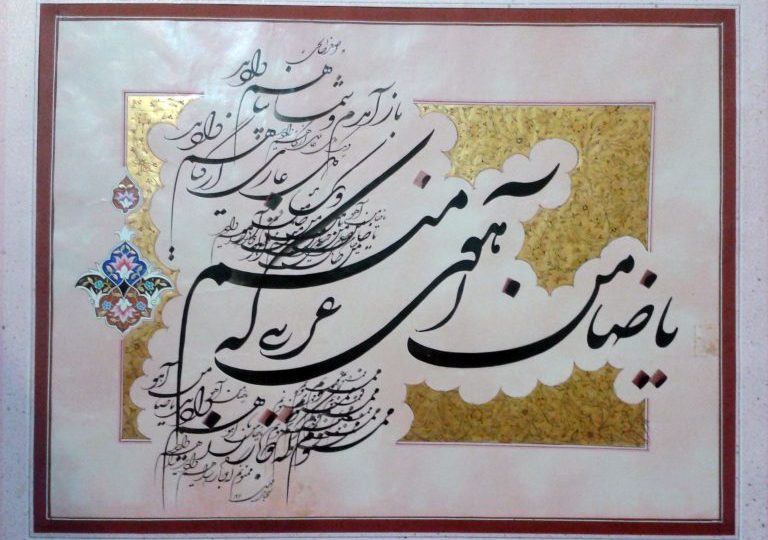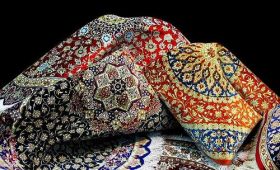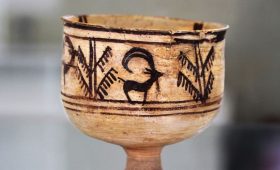Persian calligraphy or Iranian calligraphy is the calligraphy of the Persian language. It is one of the most revered arts throughout history of Iran.
after the introduction of Islam in the 7th century, Persians adapted the Arabic alphabet to Persian and developed the contemporary Persian alphabet. The Arabic alphabet has 28 characters. An additional four letters were added by Iranians, which resulted in the 32 letters currently present in the Persian alphabet.
different Persian calligraphy
Around one thousand years ago, Ibn Muqlah and his brother created six genres of Iranian calligraphy, namely “Mohaqiq”, “Reyhan”, “Sols”, “Naskh”, “Toqi” and “Reqa”. These genres were common for four centuries in Persia. In the 7th century (Hijri calendar), Hassan Farsi Kateb combined the “Naskh” and “Reqah” styles and invented a new genre of Persian calligraphy named “Ta’liq”. In the 14th century, Mir Ali Tabrizi combined two major scripts of his time, i.e. Naskh and Taliq, and created a new Persian calligraphic style called “Nas’taliq”. In the past 500 years Nastaʿlīq (also anglicized as Nastaleeq) has been the predominant style for writing the Perso-Arabic script.
In the 17th century Morteza Gholi Khan Shamlou and Mohammad Shafi Heravi created a new genre called cursive Nastaʿlīq Shekasteh Nastaʿlīq. Almost a century later, Abdol-Majid Taleqani, who was a prominent artist at the time, brought this genre to its highest level. This calligraphic style is based on the same rules as Nas’taliq. However, cursive Nas’taliq has a few significant differences: it provides more flexible movements, and it is slightly more stretched and curved. Yadollah Kaboli is one of the most prominent contemporary calligraphers within this style.
Persian calligraphy
Naskh script is a script invented in the early third century AH by Ibn Muqalla Shirazi, which was originally the basic script of the Kufic script. Copy means copied or transcribed and copied. The Naskh script was in fact the first script to be invented to complete the shortcomings of the Kufic script and to add Arabic, movements and sounds to make it suitable for the Persian alphabet.
This line was taken from two Coptic and Syriac lines. However, some believe that the Naskh script existed before Ibn Muqalla. Because at the end of the first century AH, a new script was built by the order of Abdul Malik bin Marwan to eliminate the shortcomings of the Kufi script. But what is certain is that Ibn al-Muqalla developed this line in order to adapt it to the Persian alphabet.
Persian calligraphy Naskh
The Naskh script was generally known from the end of the second century AH; But it was not very common until the end of the third century AH. This line spread to all the eastern lands that were under the banner of Islam. An important advantage of the Naskh script is the observance of the ratio, which is one of the important rules of calligraphy that makes the script beautiful.
Persian calligraphy: Thuluth
The Thuluth line is one of the most important methods in Islamic calligraphy and one of the six lines and its invention is attributed to Abu Ali Ibn Muqalla Beizawi Shirazi (known as Ibn Muqalla) who lived in the third century AH.
The Thuluth line with a static and dignified structure is mostly used in the decoration of books and inscriptions. The gradual evolution of the third as a decorative line was formed by Ibn Muqalla, Ibn Bawab and Yaqut Mustasemi. Ibn Bawab combined beauty and elegance with the third line. The third line is used in Iran to write the titles of the chapters of the Holy Quran, on the back of the cover, on the headers, and especially in inscriptions and tiles, and is still common.
Persian calligraphy: Reqa
The calligraphy is one of the six lines in Islamic calligraphy, often used for private correspondence on small pieces of paper or for the writing of customary and non-religious books and pamphlets other than the Qur’an or supplications.
Persian calligraphy Reyhan
Reyhan script is the name of a style of calligraphy in Arabic-Persian script. The basil line is derived from the researcher line and is a delicate and small line and has all the features of the researcher line, but it is more delicate and for this reason it has been compared to flowers, leaves and basil. This line has been invented for ease of writing and they want to use the researcher’s style and method in summarizing.




